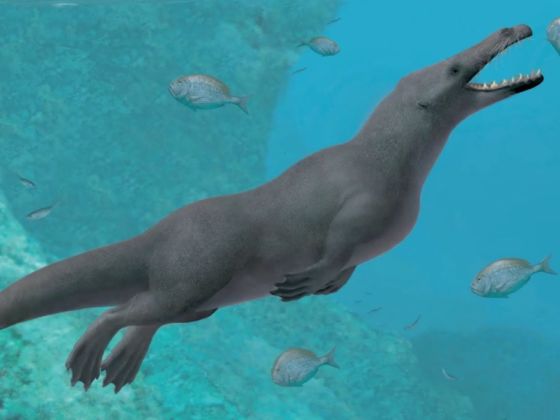The fossil of a 42.6-million year-old whale has just been discovered off the coast of Peru, but it’s no ordinary cetacean. This fossil belonged to a creature with four legs and hooves at the tip of its fingers and toes — a whale capable of walking on land, with a tail and webbed feet that suggest it was also a powerful swimmer. This 13-foot-long animal is considered by the scientific community to be a prime example of the evolution of hoofed mammals into the whales we know today.

42-Million-Year-Old Fossil of Four-Legged Whale With Hooves Discovered
This whale got legs! Meet Peregocetus pacificus, 43 million yr old, over 3 m long, the oldest known #whale from the Pacific Ocean. It probably used its hindlegs and tail together to swim, like modern-day otters. https://t.co/x1zNFcx3I7 #FossilFriday #evolution art: A. Gennari pic.twitter.com/Es55TUnjs4
— Current Biology (@CurrentBiology) 5 avril 2019
Oliver Lambert, a scientist at the Royal Belgian Institute of Natural Sciences and first author of the study of the discovery, explained to The Guardian that, “Other examples from this time were more fragmentary, less complete specimens. We didn’t have a clear indication about their swimming and walking abilities.” This specimen, however, shows that early whales could swim for weeks at a time while also retaining the ability to walk on land. Returning to land would have been necessary for whales to perform certain activities, like mating and giving birth.
The study explains that is the first time such a fossil has been discovered in the Americas. Previously, older whale ancestors — dating back to 53 million years ago — were found in India and Pakistan, but the Peruvian specimen suggests that the first whales may have crossed the South Atlantic.
Fittingly, the fossil has been named the Peregocetus pacificus, which means “the traveling whale that reached the Pacific.”
H/T: The Guardian